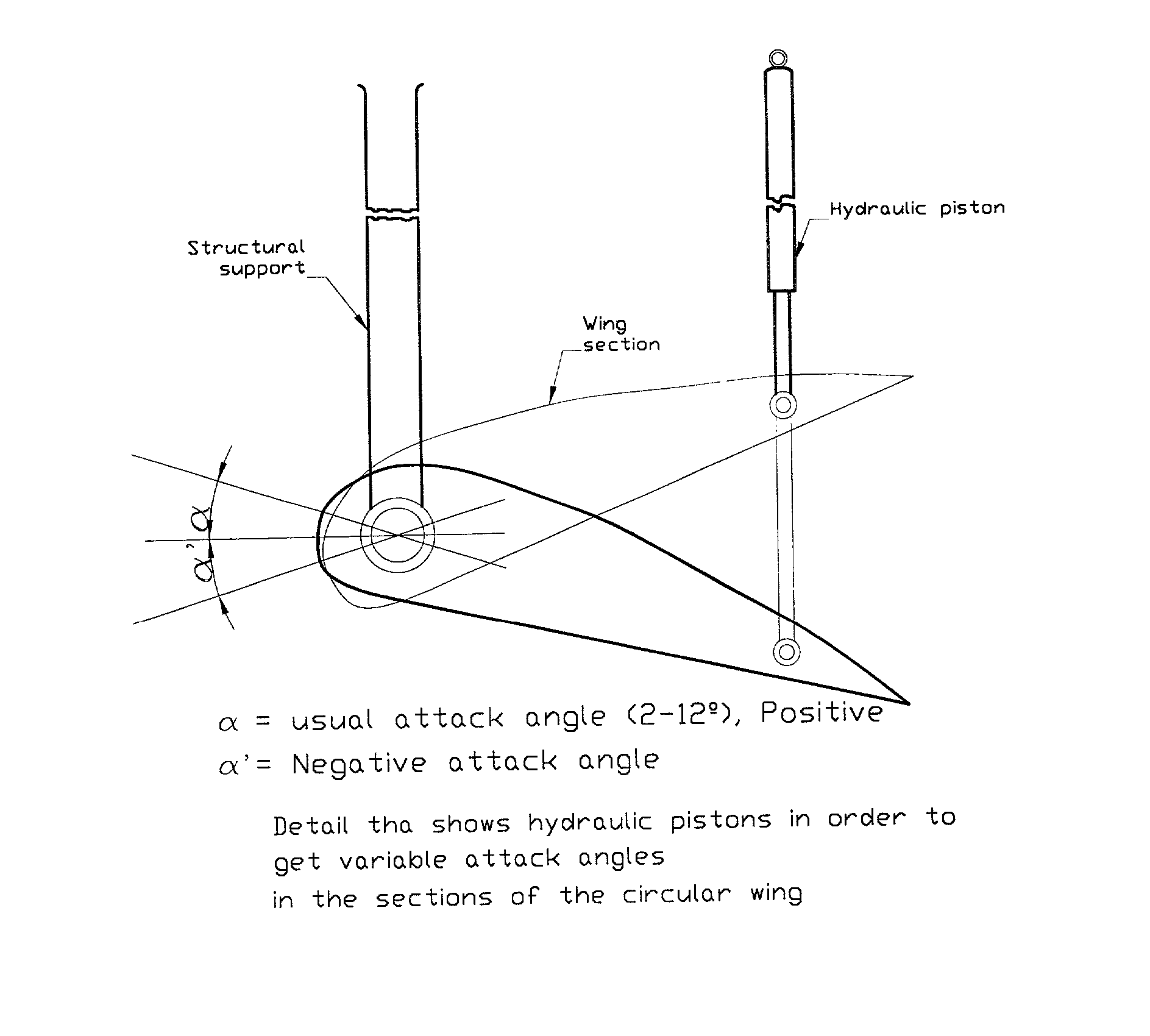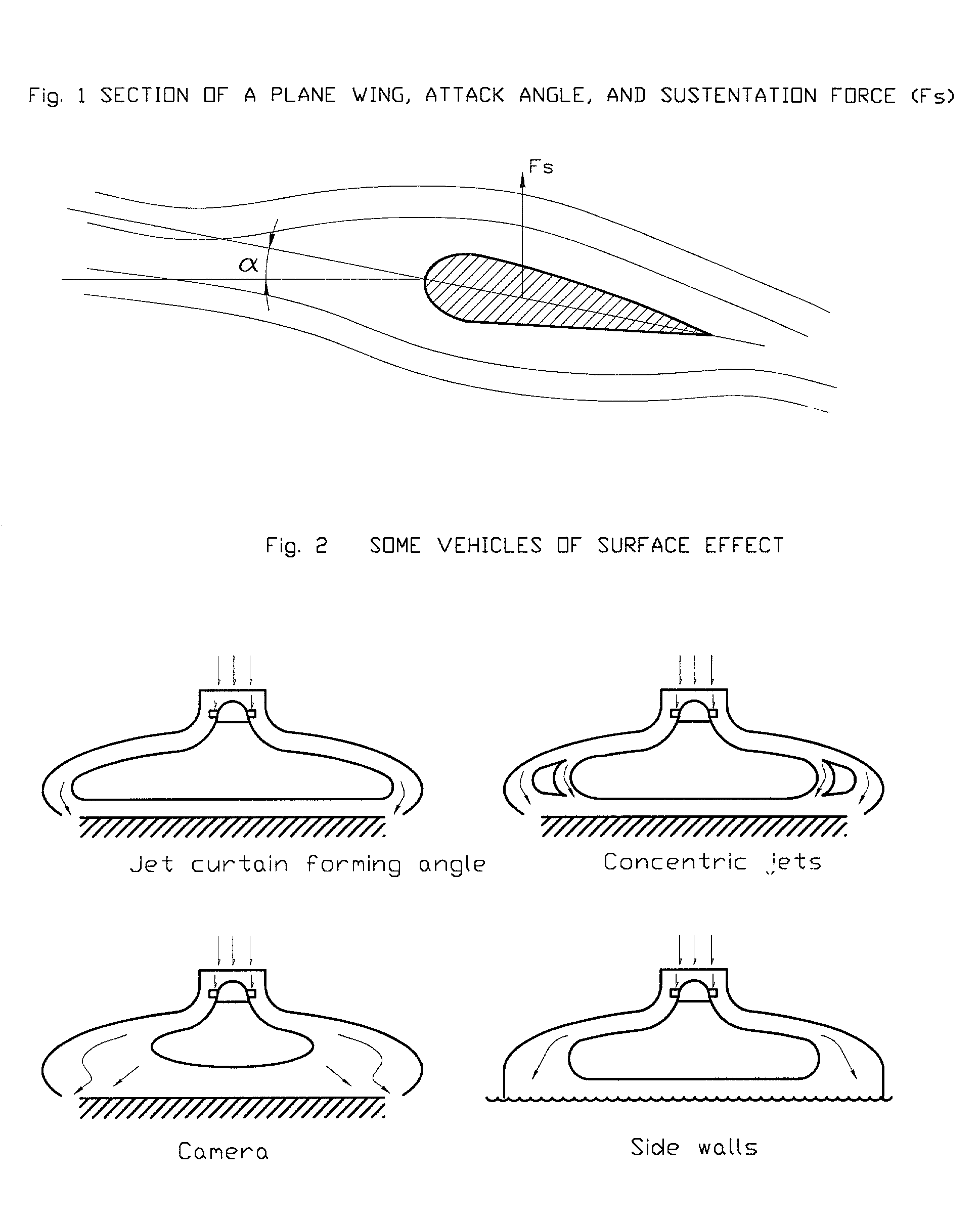Flying vehicle of inverse sustentation (FVIS)
a technology of inverse sustentation and flying vehicle, which is applied in the direction of vertical landing/take-off aircraft, aircraft navigation control, air-cushion, etc., can solve the problems of airplane inclination, inconvenience, design limitations, etc., and achieve good cargo bay capacity , the effect of reducing the size of the aircra
- Summary
- Abstract
- Description
- Claims
- Application Information
AI Technical Summary
Problems solved by technology
Method used
Image
Examples
Embodiment Construction
.
[0105] The Flying Vehicle of Inverse Sustentation (FVIS) is an air transport unit for passengers and cargo. It has vertical takeoff, due to a central airflow or gas escape directed radially toward a stable circular wing with regard to this flow by means of a duct designed for this purpose. The vehicle consists in general of the following main parts:
[0106] The flow generating plant or main unit which can be:
[0107] A jet engine
[0108] An aeronautical motor of internal combustion and a screw propeller
[0109] A jet engine and a screw propeller
[0110] An air admission duct
[0111] An exit duct
[0112] A circular wing
[0113] A main circular unitary axis
[0114] A protective cover
[0115] The secondary unit of propulsion
[0116] A tail steering wheel (when necessary)
[0117] A cockpit
[0118] Accessories (generator, electric motors, valves, fuel tank, bomb of fuel, accumulator, hydraulic bomb, hydraulic pistons)
[0119] A cockpit of optional inferior maneuver
[0120] To obtain the main flow of sustentation can...
PUM
 Login to View More
Login to View More Abstract
Description
Claims
Application Information
 Login to View More
Login to View More - R&D
- Intellectual Property
- Life Sciences
- Materials
- Tech Scout
- Unparalleled Data Quality
- Higher Quality Content
- 60% Fewer Hallucinations
Browse by: Latest US Patents, China's latest patents, Technical Efficacy Thesaurus, Application Domain, Technology Topic, Popular Technical Reports.
© 2025 PatSnap. All rights reserved.Legal|Privacy policy|Modern Slavery Act Transparency Statement|Sitemap|About US| Contact US: help@patsnap.com



